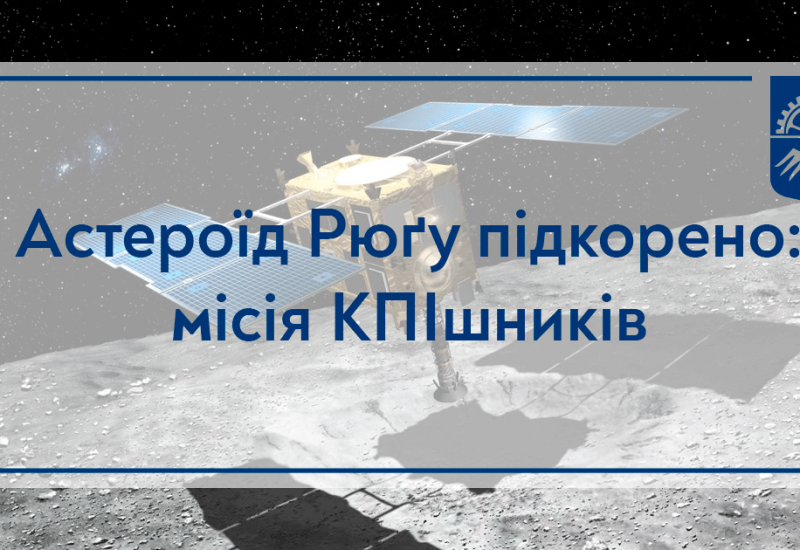The MASCOT module successfully completed a space mission and delivered soil to Earth from the asteroid Ryugu. Had Igor Sikorsky Kyiv Polytechnic Institute not made heat pipes for the device, “Hayabusa2” would not have been able to survey the asteroid for more than a year and collect samples.
The space mission began on December 3, 2014 - with the launch of the Japanese spacecraft “Hayabusa-2” from the largest rocket-launch complex Tanegashima. It aimed to study a Class C dark asteroid of the rare spectral type, in particular to deliver soil samples. The asteroid Ryugu, whose measures are approximately 1 kilometer (0.6 mi) in diameter, was chosen as the target, the orbit in the perihelion enters the Earth's orbit, and in aphelion it touches the orbit of Mars. The space probe has travelled more than three billion kilometers to the research object. Since October, the MASCOT module, descending from a height of 51 meters, has taken a series of photos, successfully landed on the asteroid and took the soil samples for research.
The module approximately measures 30x30x20cm and has a mass of 9.6kg. It was developed by the German Aerospace Center and The National Centre for Space Studies of France in cooperation with experts of Igor Sikorsky Kyiv Polytechnic Institute.
Initially, German scientists commissioned the design and manufacture of heat pipes at two institutes of Belgium and Spain. They have worked for a year, but in the end could not cope with the task. Igor Sikorsky Kyiv Polytechnic Institute specialists helped European colleagues to create highly efficient heat transfer devices for the module. Heat pipes of a certain size, configuration and weight had to be developed for the spacecraft, yet taking into account variable thermal resistance. The project has been created at the Faculty of Heat and Power Engineering, where Professor M.Semena School has been working and doing research for over half a century. It was he who headed the development of heat pipes of metal-fibrous porous structure. According to the previous technology, a porous layer of pipes was made of powder. However, Igor Sikorsky Kyiv Polytechnic Institute scientists' know-how has raised porosity from 60 to 90 percent. As a result, the heat transfer efficiency as well.
Applying fundamental knowledge, a group of scientists headed by Professor Volodymyr Kravets developed and manufactured heat pipes for the spacecraft.
Igor Sikorsky Kyiv Polytechnic Institute scientists have not achieved the desired results immediately. It was necessary to divert heat flow of about 30 watts. The first results showed only 5 watts. Then it was decided to use a capillary-porous structure based on pieces of thin copper wire. The layer of such segments is sintered in an inert atmosphere - and thus a porous metal-fibrous material is formed.
Then it is inserted into the tube on the mandrel and sintered to its surface. The capillary-porous structure under vacuum is filled with methanol - and the tube is sealed. Then the scientists soldered the flanges to it and shaped it by bending in the appropriate mandrel. Then they covered the tube with a protective nickel coating. The next step was parameters determining and testing - particularly on a vibrating table. The experiments have lasted for three months, and the adjustment to the set parameters - two more. In total, several dozen pipes have been made until the set parameters were reached.
Let us recall that heat pipes are highly efficient heat transfer devices. Their construction consists of a metal, usually copper, tube, the inner surface of which is a layer of porous material, and the central part is hollow. Material pores are filled with liquid, which choice depends primarily on the range of operating temperatures of device. The principle of operation of a heat pipe is as follows: coolant boils at the heated end of pipe, and steam in the central part moves to the cold end, where it condenses turning into a liquid. The liquid due to capillary forces goes through filler pores from the cold end to the hot. Because boiling and condensation processes are used inside the device, heat flux through heat pipe is hundreds of times higher than through copper rod of the same cross section and length.
Our scientists have really made it! The mission is complete thanks to Igor Sikorsky Kyiv Polytechnic Institute scientists!

